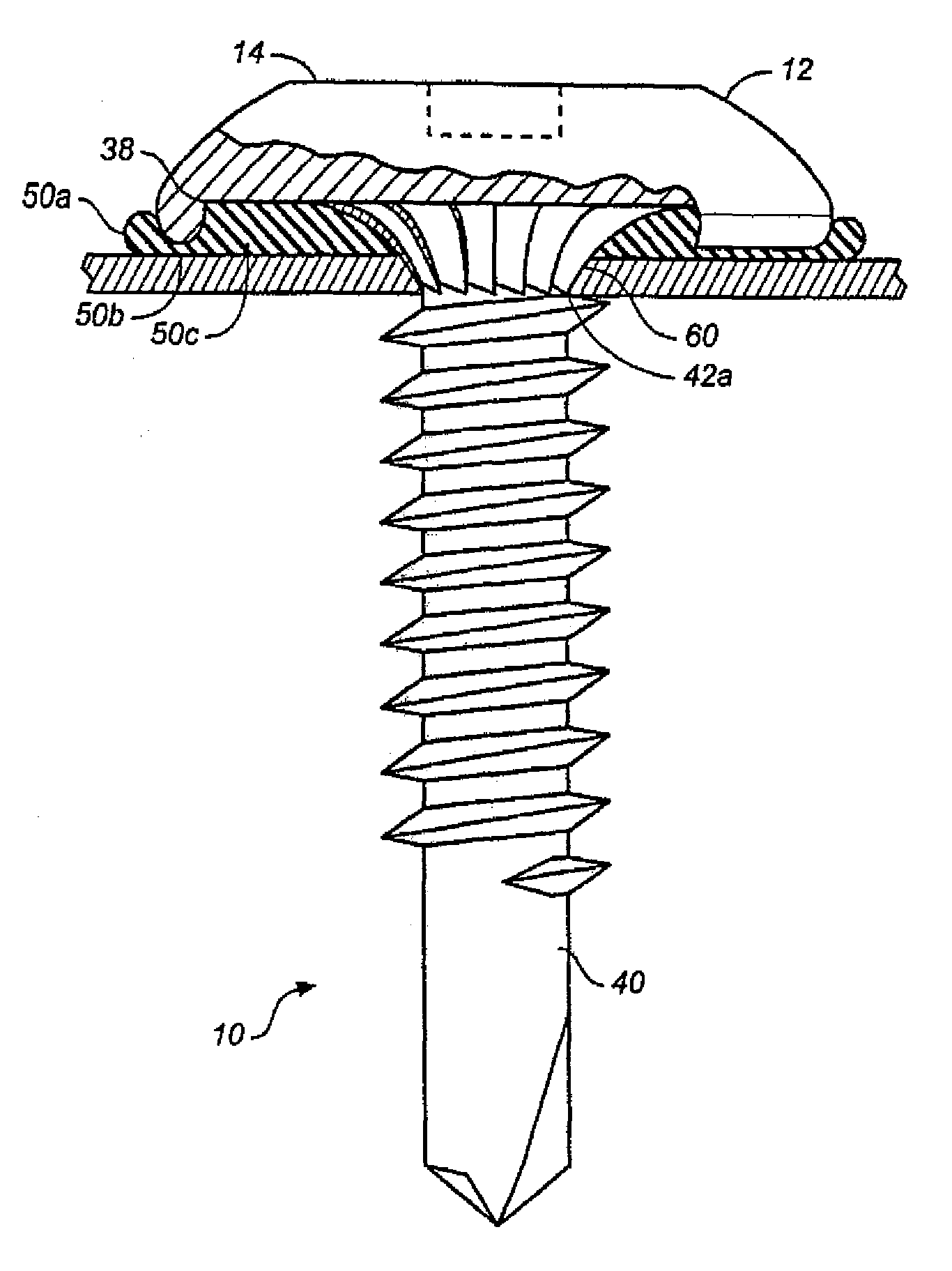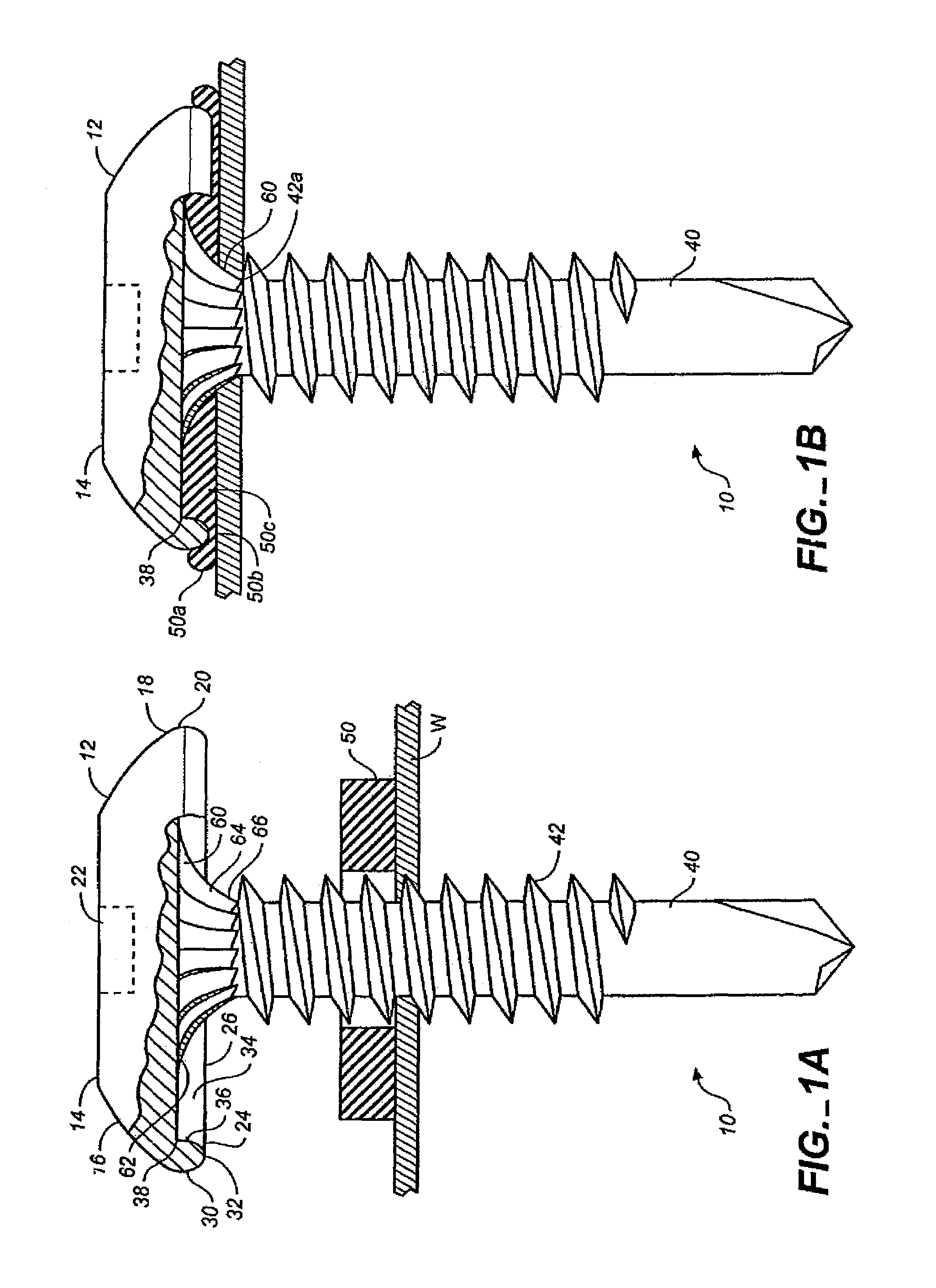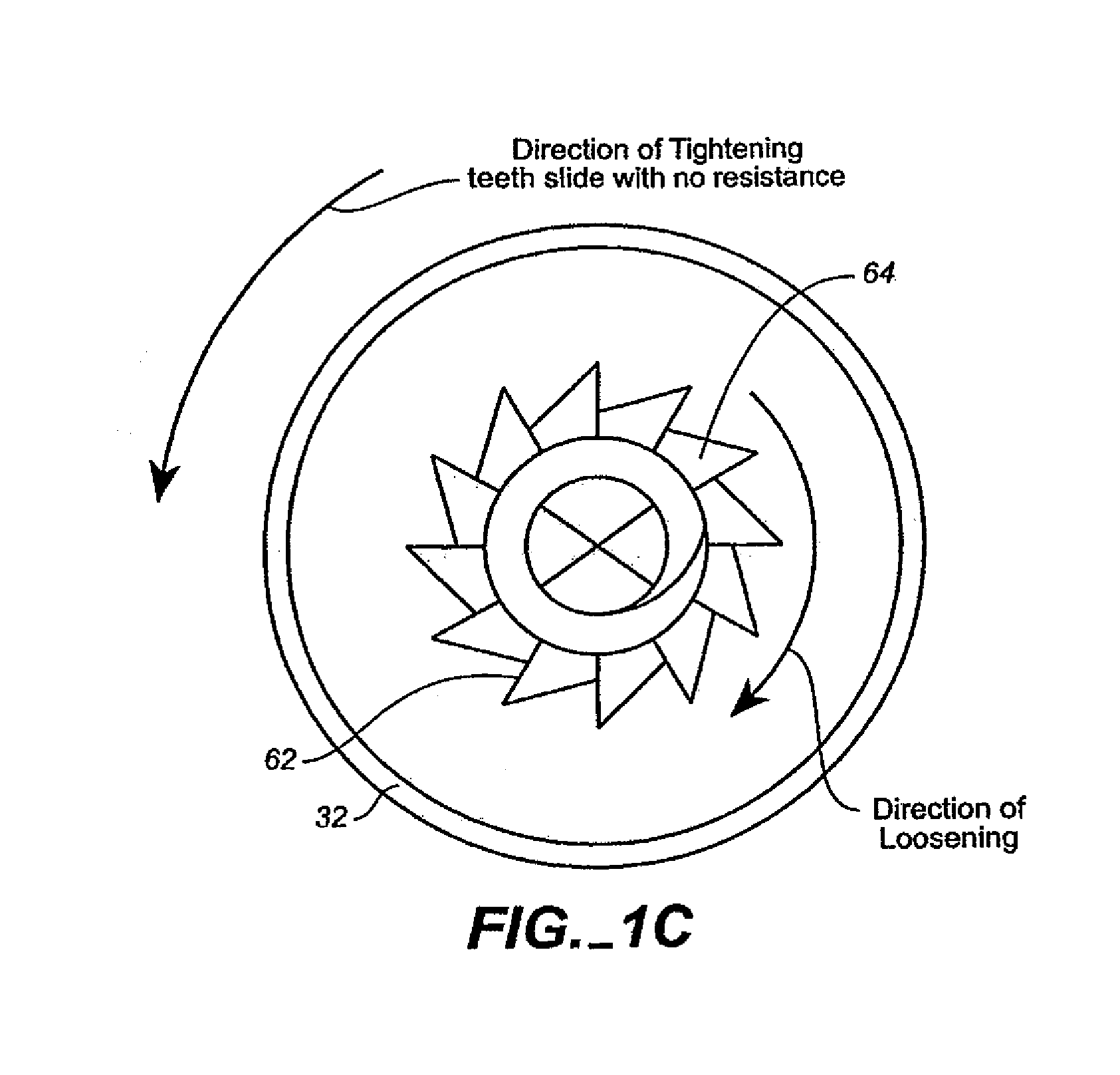Fastener apparatus for roofing and steel building construction
a technology for fasteners and steel buildings, applied in the direction of washers, fastening means, screws, etc., can solve the problems of allowing rust and destroying protective coatings, and achieve the effects of reducing wind buffeting, reducing friction during snow unloading, and reducing friction
- Summary
- Abstract
- Description
- Claims
- Application Information
AI Technical Summary
Benefits of technology
Problems solved by technology
Method used
Image
Examples
embodiment 100
[0065]FIG. 2A is a side elevation view in partial cross-section of an alternate (no locking teeth) embodiment 100 of a fastener apparatus of this invention during installation, while FIG. 2B is a side elevation view in partial cross-section of the fastener 100 as installed. On this design, the shank threads 102 stop below the headline 104 so as to stop the raised metal panel protrusion from riding into the recess 106 and damaging the seal 108. This is a depth gauge 110 which stops the lip 112 from making contact. This upper shank area is also not threaded so the head to shank connection is larger and stronger so as to support the wide head design without the head easily shearing off.
embodiment 200
[0066]FIG. 3A is a side elevation view of a self-tightening head embodiment 200 of a fastener apparatus of this invention, while FIG. 3B is a top plan view of the fastener 200 as installed. The head of this particular design works with the snow and ice that is unloading off a rooftop and sliding over the fastener head. The intent is to have a series of raised vertical walls 202 that are sharp at the top 204 and with a backside 206 that slopes down from the top of one vertical wall to the bottom of the next vertical wall. The overall shape is somewhat similar to that of a propeller. The concept has the vertical wall side catching the snow and ice sliding which will apply a turning force in the direction of tightening the fastener. This wall must be limited to prevent snow and ice from over tightening and stripping the fasteners teeth from the substructure.
[0067]The backside in this design is sloped from the top of one vertical catch wall, around the head and down to the bottom of the...
embodiment 400
[0071]FIG. 5 is a side elevation view in partial cross-section of a nail head and elongated thread shank embodiment 400 of a fastener apparatus of this invention during installation. This is a nail design that utilizes many of the features described above. The differences are a nail head 402 which does not require a tool fitting to be punched into it, therefore a standard shank size will remain at its intended strength.
[0072]Elongated threads 404 impart a twisting motion during application that will allow the locking teeth 406 to work similarly to how they work when using a shank with screw threads. The fastener spins as it is applied and locks into place when it tries to unscrew, or in the case of the nail, twist out.
[0073]In order for the head of the inventive fastener designs to remain strong enough to equal ANSI Standards and pass all required UL Testing for use in the field, while incorporating the deep recess and the inset tool fitting which combined will weaken the head, a ra...
PUM
 Login to View More
Login to View More Abstract
Description
Claims
Application Information
 Login to View More
Login to View More - R&D
- Intellectual Property
- Life Sciences
- Materials
- Tech Scout
- Unparalleled Data Quality
- Higher Quality Content
- 60% Fewer Hallucinations
Browse by: Latest US Patents, China's latest patents, Technical Efficacy Thesaurus, Application Domain, Technology Topic, Popular Technical Reports.
© 2025 PatSnap. All rights reserved.Legal|Privacy policy|Modern Slavery Act Transparency Statement|Sitemap|About US| Contact US: help@patsnap.com



